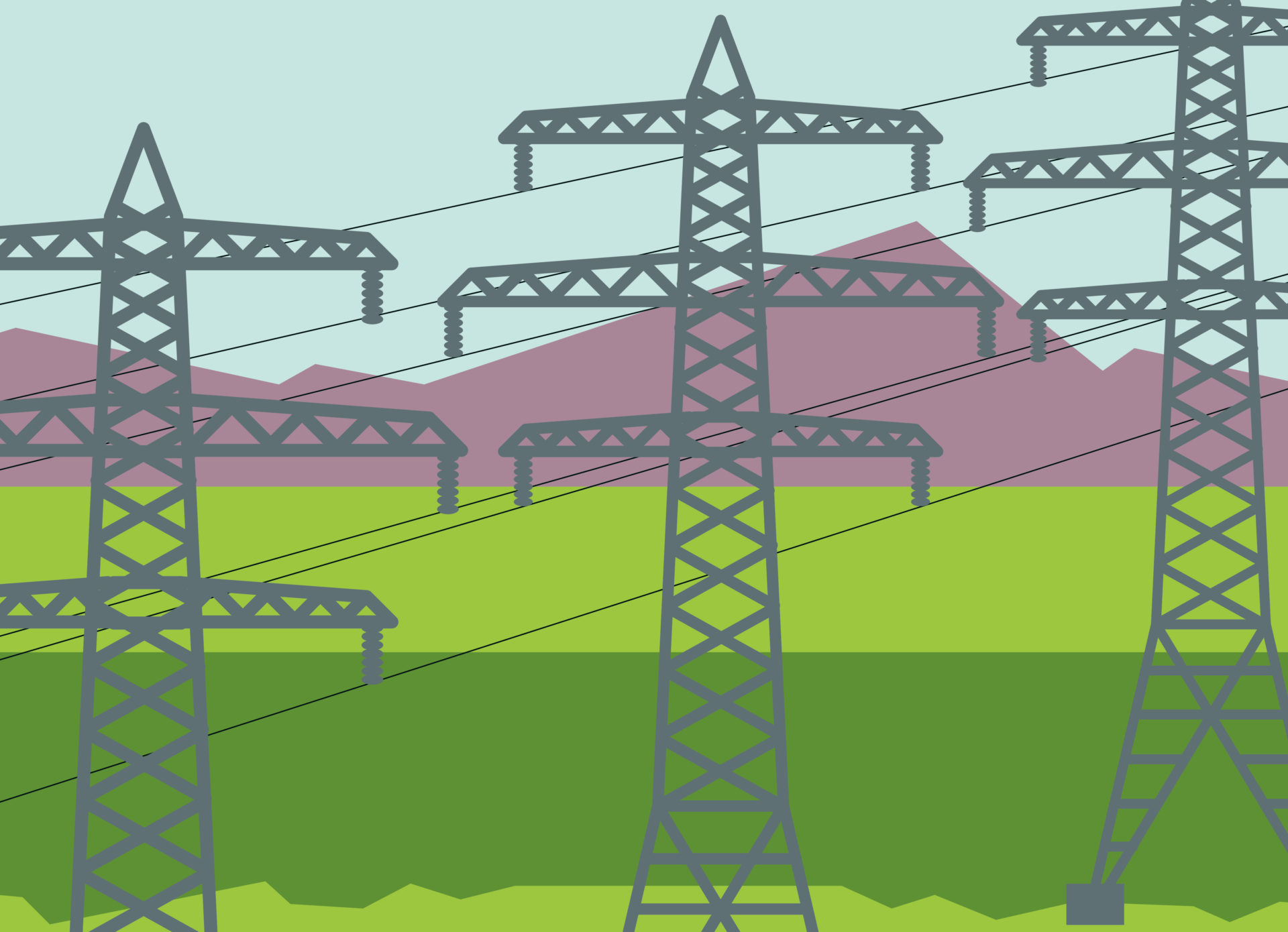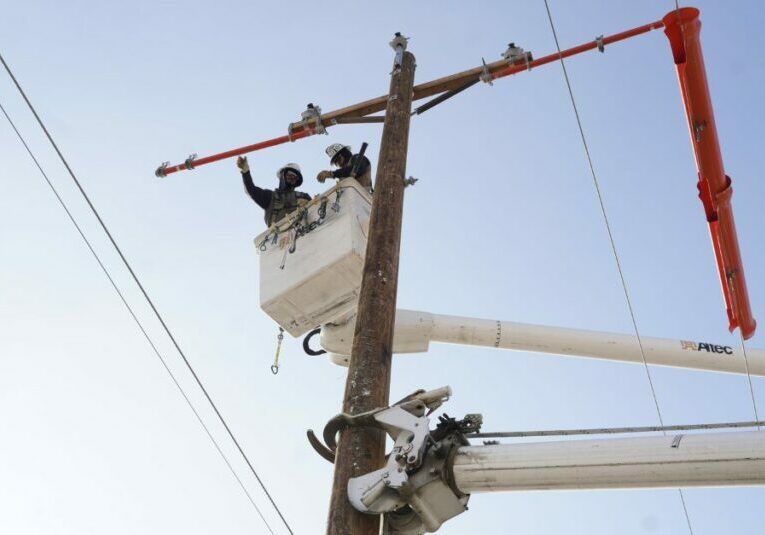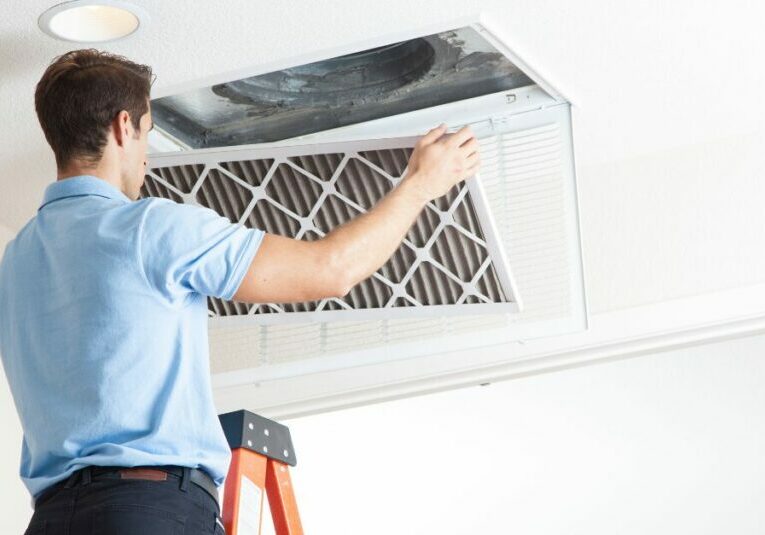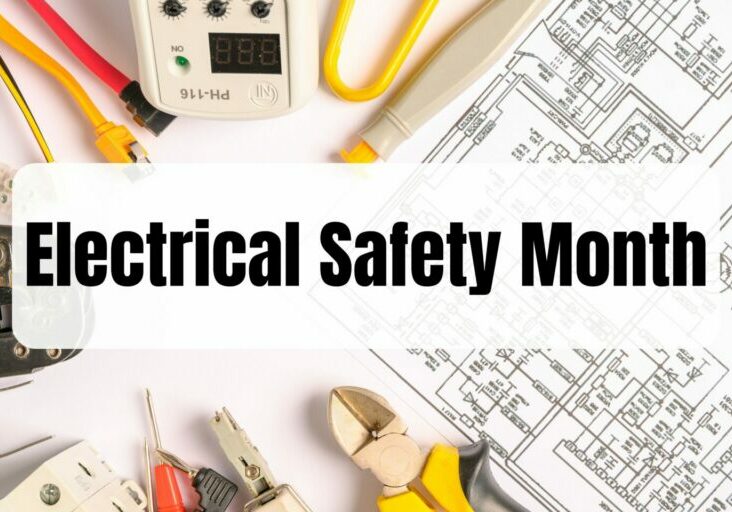Transmission: From Dam to Doorstep

Once the force of a flowing river is turned into electricity at hydroelectric dams, it still has a long way to go before reaching your house, business or school.
This energy now must flow along transmission lines, sometimes hundreds of miles from its source.
When electricity first leaves a dam, it is high voltage, meaning it is too powerful to run our appliances and electronics.
High-voltage transmission is the preferred method to move electricity cross long distances because less electricity is lost in transit. High-voltage transmission wires, or conductors, are typically strung between tall steel towers, the kind you see along highways and through the countryside.
When the electricity nears cities and communities, it passes through a substation that uses transformers to change the electricity into a lower, more usable voltage. From here it will travel on distribution lines, which use thinner, lighter conductors typically strung between wooden poles. These lines carry energy through neighborhoods to the electric outlets that power your lights and charge your smartphones.
Getting hydropower to homes and businesses takes careful planning. Transmission lines can only carry the amount of electricity that will be consumed. In order to keep the right amount of power flowing, computers calculate how much electricity should be sent across the system when and where.
The People Behind the Power
It may seem like magic that water can turn into the energy that powers your TV and lights at the push of a button or the flip of a switch. None of it is possible without skilled individuals building and maintaining the system that brings electricity to your home. Transmission line workers manage the world behind your light switch.
These highly skilled men and women are electricians specially trained to work on transmission and distribution lines. They ot only build lines, they maintain them and restore power when there is an outage. Some work on the ground, some work on the lines and towers and some even work from helicopters that lift and place transmission towers.
The job they do is dangerous and requires carefully managing the powerful electricity that flows through the lines. They risk electric shock and burns, and work from great heights–often on nights and weekends–and in less-than-desirable weather conditions.
Thanks to transmissions systems—and the lineworkers, substation operators, dispatchers and countless other people who keep the grid operating—our communities are able to enjoy the benefits of hydropower generated far from our front door.
Courtesy of the Bonneville Power Administration
Recent Posts

Five Ways to Safeguard Your Home This Winter

Winter Weather May Impact Electric Bills

Cybersecurity Tips For a Safer Digital World

Electric Co-ops Grow for the Communities They Serve

Go Above and Beyond for a Safe Harvest

The Vital Role of the Lower Snake River Dams

5 Tips to Beat the Summer Heat

What You Need to Know About Furnace Filters

May is Electrical Safety Month



